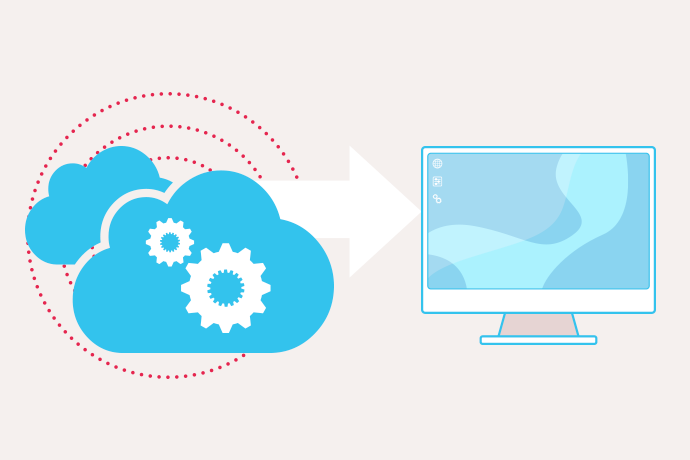Cart Total
$0.00
-
Your shopping cart is empty
Loading

Hello! Log in Your Account
New customer? Start here


|
5 min read
Contents
Quick Summary
While some businesses will only need the voice services of a strong VoIP platform, others will need more from their communications solution...
In any business context, the quality of your communication is going to be crucially important for every component of your operations. This is especially true in the current climate where remote work is required, and many organisations are struggling to figure out exactly how to enable the sort of collaboration and communication that they once had in person.
When you’re considering this aspect of business, you are faced with a dilemma between two different types of technology, namely VoIP and UCaaS. Each has its own pros and cons and are suited to different use cases. In this article, we are going to compare the two and give you some insight as to how to make the right selection for your unique situation.
Let’s dive in.
--
VoIP stands for Voice Over Internet Protocol and it’s an internet-enabled alternative to traditional phone services. Instead of using landlines, VoIP providers enable the same features for widespread business communication but through an internet platform. From a user experience perspective, they won’t notice much different to regular phone calls – but behind the scenes, you benefit from a range of advanced features and significant cost savings to go along with it. The canonical example that most people will be aware of will be Skype, but they are just one player amongst many in the space. And in a business context, you probably want to get a custom VoIP provider that can create a specific solution for you.
UCaaS is an acronym that stands for Unified Communications as a Service, and it’s better understood as a suite of tools for business communications. A UCaaS solution aims to bring a range of different communication modalities into one place to enable better alignment and a one-stop-shop for internal collaboration. Typically, these solutions will include VoIP, video conferencing, file sharing, instant messaging for business, and more. The most popular example of this is probably Microsoft Teams which is a full-featured communication platform that fits natively into the Microsoft ecosystem.
Each of these options can be very powerful for different applications, and so now that we’ve got a sense of each, let’s look at some of the key considerations that come into play when deciding between the two.
There is no one-size-fits-all here, so it’s worth doing some introspection to identify the features and components that matter for your organisation and the way that you work. Here are three of the major principles to keep in mind:
When you’re a small company and you don’t have a lot of complex lines of communication, you can achieve all you need with a pure VoIP provider. The simplicity of this solution ensures that there is little to no friction so you can just get on with things. As you grow in size and the business starts to scale in complexity, it becomes more valuable to go with a full UCaaS solution because of the larger feature set and the enablement of a range of different communication methods. These tools scale very well with your team and the monthly service cost becomes worth it.
VoIP solutions tend to be stand-alone, and they function as a bolt-on addition to your existing processes. Whereas a UCaaS solution will typically integrate much more natively into the rest of your productivity solutions, including file management, workspace collaboration, and internal documentation. If this integration is important to your business and you want to leverage those efficiencies then you’ll want to go with UCaaS. It does introduce more complexity though, so keep that in mind. But for many businesses, that is a worthwhile trade-off.
Some businesses rely very heavily on voice communication because of the industry they’re in, the company culture, or a range of other factors. For these businesses, it makes sense to invest in a high-quality VoIP provider because it’s a core component of the operations. However, if your internal communications are spread across voice, video conferencing, and instant messaging – then a UCaaS solution is going to be much more effective because it pulls it all into the same interface for ease of use.
--
So, there you have it. Hopefully, this gives you a better sense of the distinction between VoIP and UCaaS so that you can make the right decision for your business. At the end of the day, you want to select your tools based on the current and future needs of your organisation to enable the most productive working environment that you can.
These technologies provide tremendous value in terms of cost-saving and efficiency gains – and they’ve become a staple of modern business for a reason. It’s only once you’ve installed and integrated them into your workflows that you’ll realise just what you’ve been missing out on. And if there’s anything we can do to help you on the journey, just let us know!


Explore the benefits of modern Software as a Service subscriptions and see how they can offer added flexibility and scalability for businesses.
Posted December 13 2023 | 3 min
How to send messages in the Yay mobile app
Posted December 21 2022 | 1 min

This guide to working remotely aims to prep distributed teams to deal with the unique challenges and opportunities that flexible and remote work present.
Posted May 12 2022 | 27 min

Yay is a secure, encrypted alternative to Slack for businesses with a powerful phone system at its core, connecting businesses in ways Slack can't.
Posted March 25 2022 | 8 min

Poor business communications can cost your business in more ways than you think. We discuss the data and the possible solutions.
Posted February 25 2022 | 7 min

Hybrid working is a model that sees staff working from the office on some days and from home on others. Learn how to tackle the inherent challenges
Posted November 2 2021 | 5 min

The best managers will support and reward team members, even when working remotely. Here are 5 actionable tips for how to get the most out of your remote teams.
Posted August 26 2021 | 5 min

Your UCaaS platform makes up the infrastructure you use to speak to customers and to collaborate internally. Choosing the right provider is important. Here's what to look out for.
Posted March 18 2021 | 8 min

Unified Communications services make it easy for your staff to work remotely and flexibly by providing a stable hub for all your business communications
Posted February 10 2021 | 5 min

How do Hosted VoIP platforms and Unified Communications as a Service solutions differ? And which is more appropriate for your business?
Revised January 15 2021 | 9 min

With an effective unified communications solution for your business, you can keep ideas and insights flowing, even when working remotely.
Posted January 8 2021 | 4 min

Boost business efficiency by making the most of our unified communications solution, combining instant messaging for business with our VoIP phone system
Posted January 7 2021 | 4 min